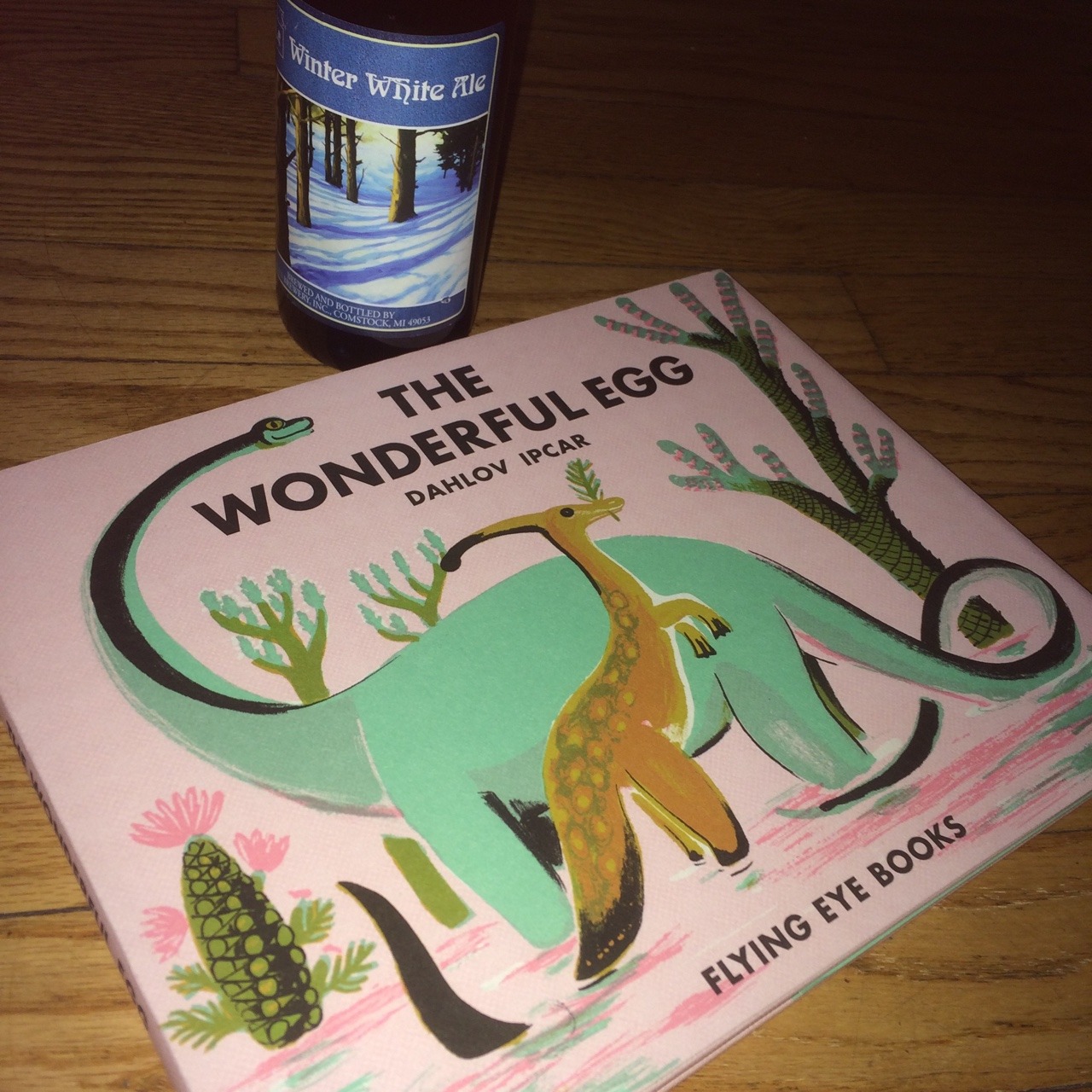The first work I saw by
Brian Biggs was his poetic short graphic novel
Frederick & Eloise, published by Fantagraphics in 1993, followed by the lovely
Dear Julia, (1995-1997, 2000). Since that time, he's illustrated
many delightful children's books written by various authors (I particularly like the Little Golden Book
I'm a T. Rex!). I've been lucky enough to get to know Brian a bit, and I was excited when I learned, a couple of years ago, that he had landed a contract for his own series of picturebooks that he would not only draw but also write.
Even after seeing some preliminary sketches and such, though, I wasn't prepared for just how wonderful his series
"Everything Goes" would turn out to be. These are large, beautiful looking books, overstuffed with fun, visual details that will keep young children busy, engaged, and entertained for quite some time.
Narratively, the books are extremely simple. In
On Land, young Henry and his father take a car trip to the train station to pick up his mother and bring her home. In
In the Air, Henry and his parents go to the airport, get on an airplane, and take off. Simple, right? But these books are all about the details - and they feature details
in abundance. Along the way in
On Land, Henry's father tells the young boy all about the different types of vehicles that the encounter on their car ride: not just automobiles and trucks, but also buses, RVs, motorcycles, bicycles, trains, and more. The presentation alternates between densely packed double-page spreads filled with vehicles and people, with labels and dialogue balloons pointing out various bits of information, and two-page cut-away views of the various vehicle types, showing and naming the various parts (engines, tires, gas tanks, gear shifts, seats - everything you can think of, as well as some things that you wouldn't, like the motorcyclist's "nice socks").
In the Air finds Henry similarly learning all about air travel from his Mom and Dad, from airplanes to helicopters to balloons and more.
But these aren't just dryly informative texts. The dialogue is often funny, especially that of the dozens (hundreds?) of background characters we encounter. Kids can have fun following the mini-stories of some of the characters who appear on multiple pages, like the man whose care battery dies, or the woman who keeps asking about the opposite of what she's doing, or the TSA agent who wonders why there's a single boot on the conveyor belt (hint: that pirate in the metal detector has a wooden leg!). Plus, there are games in each book: Find the numbers from 1-100 scattered throughout the pages! Spot all the birds wearing hats! Discover the things that don't belong! Even I had a blast examining the pages closely, and I'm a bit older than the "ages 4 and up" target audience.
It doesn't hurt - in fact, it helps tremendously - that Biggs' artwork is incredibly appealing. While his earlier comics work featured often delicate, fragile characters in carefully rendered environments, his picturebook style has become bolder, brighter, and perhaps more confident, boasting thick outlines, quirky colors, and slightly bulbous designs. Everything is cute without being "cutesy." But this style still manages to serve the more technical aspects of the books quite well: Even though the various vehicles have been "cartooned" instead of rendered photo-realistically, you still get lots of good information about how things work. There will be a time and place for older kids who need to see every single nut and bolt; but young readers will appreciate - and learn a lot from - Biggs' clear, direct illustrations.
There are also
Everything Goes board books (by Brian) and
"I Can Read!" books (by another writer and artist "in the style of Brian Biggs") available, too. I haven't had a chance to see any of them yet, but I think it's great that the series is getting a good push from the publisher. I know that children in the library where I work really enjoy spending time with these books, and I bet the kids you know will, too.
Everything Goes: On Land
by Brian Biggs
Balzer + Bray, 2011
ISBN-10: 0061958093
ISBN-13: 978-0061958090
56 pages, $14.99
Everything Goes: In the Air
by Brian Biggs
Balzer + Bray, 2012
ISBN-10: 0061958107
ISBN-13: 978-0061958106
56 pages, $14.99













